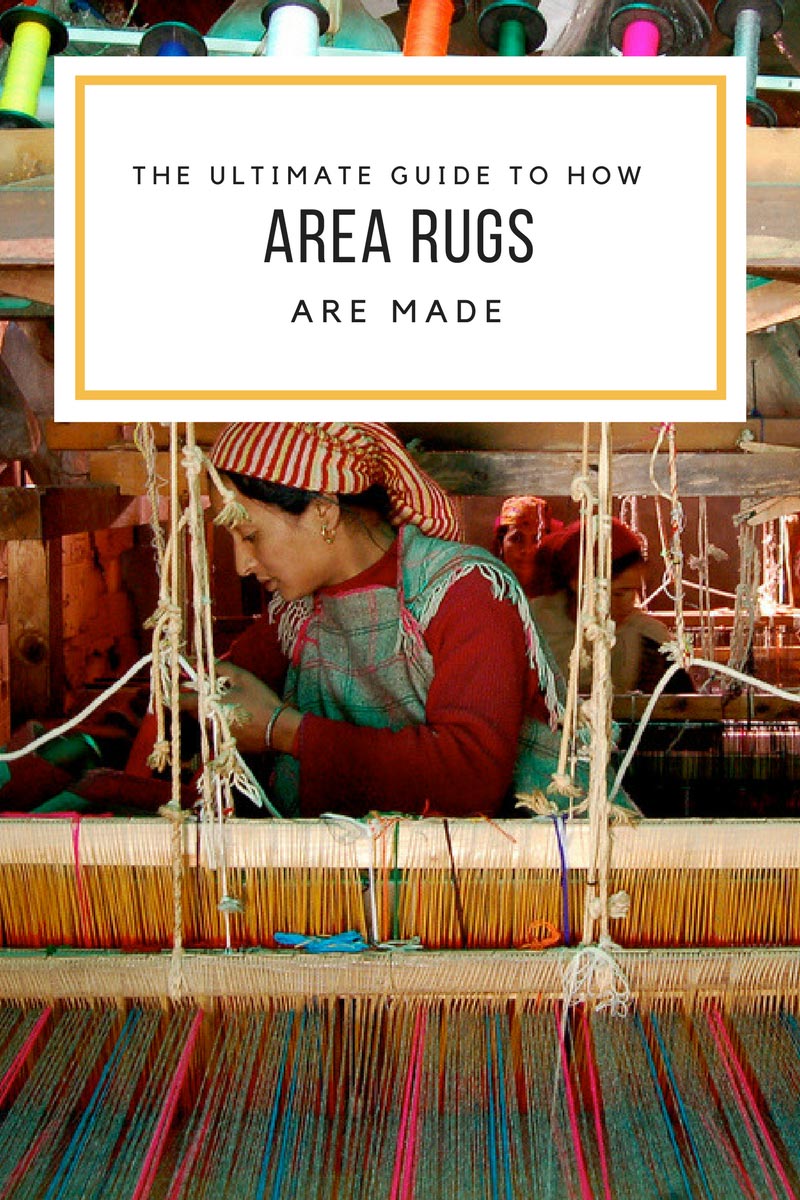
Photo: Sumeet Jain: Women Making Rugs – Creative Commons License – Text Added
Area rugs are beautiful additions to any room that can fit into just about any budget. When you add one to your living space, you bring a pop of color, style, and sophistication into the room, and you provide an elegant and attractive conversation piece to interest your friends and family as well. In order to select the right area rug for your room, it is important to understand the process by which these unique treasures are created. The more you know about how area rugs are made, the easier it will be for you to choose between the wide variety of different types available on the market today.
Hand Tufted
Hand tufted area rugs are made to look fluffy and soft without the use of knot-tying in the production process. Instead of being made completely by hand, a tool called a tufting gun is used in the creation of these rugs. The backing is printed with the final design, which makes it easy for the rug maker to simply follow the pattern and fill in the appropriate colors in the right places with the tufting gun. The material is pushed through the backing with the gun, and no knot is needed to secure it into place. The back of the rug is coated with scrim and finished with latex glue, and then the decorative backing is applied to finish the piece. Finally, it is then trimmed so that the pile is even throughout, making it look uniform and perfect every time.
Hand tufted rugs are durable and sturdy, and since they are made using printed backings and tools, they are usually much more affordable than completely handmade alternatives. They look the part, however, and are perfect for any area that gets a lot of foot traffic. They do not quite hold the prestige that a completely handmade rug might, however, so it is important to make the right decision for your household. Hand tufted rugs are usually made of wool, but may also be made with polyester, polypropylene, and even silk or cotton, although these materials are less common.
Machine Made / Power Loomed
For a much more affordable area rug option for your living space, consider purchasing a machine made, or “power loomed,” rug instead of spending a lot of money on a handmade piece. These rugs are often made from high-quality materials, but since they do not require the amount of time and effort that handmade pieces do, they cost considerably less. Very affordable rugs made of lower-quality materials are also available in the machine made category. Because these encompass a wide variety of different styles and textures, they can be made in one of several ways. Most of the time, they are woven on a loom just like a handmade one might be, but the entire process is conducted by a machine rather than by a human. They may also be sewn on a sewing machine, with or without human intervention.
Machine made rugs are very durable, and can withstand even the most high traffic areas in your home. Most of these are made from stain-resistant materials, and they may also be treated to fight stains and remain looking brand new for years. You will not have to worry about replacing them for a long while, but be on the lookout for rugs that are falsely sold as handmade items. You will not be getting a unique piece of textile work when you purchase one of these, so be sure you know what you are buying ahead of time. They come in just about any material, including wool, polypropylene, chenille, olefin, polyester, viscose, and more.
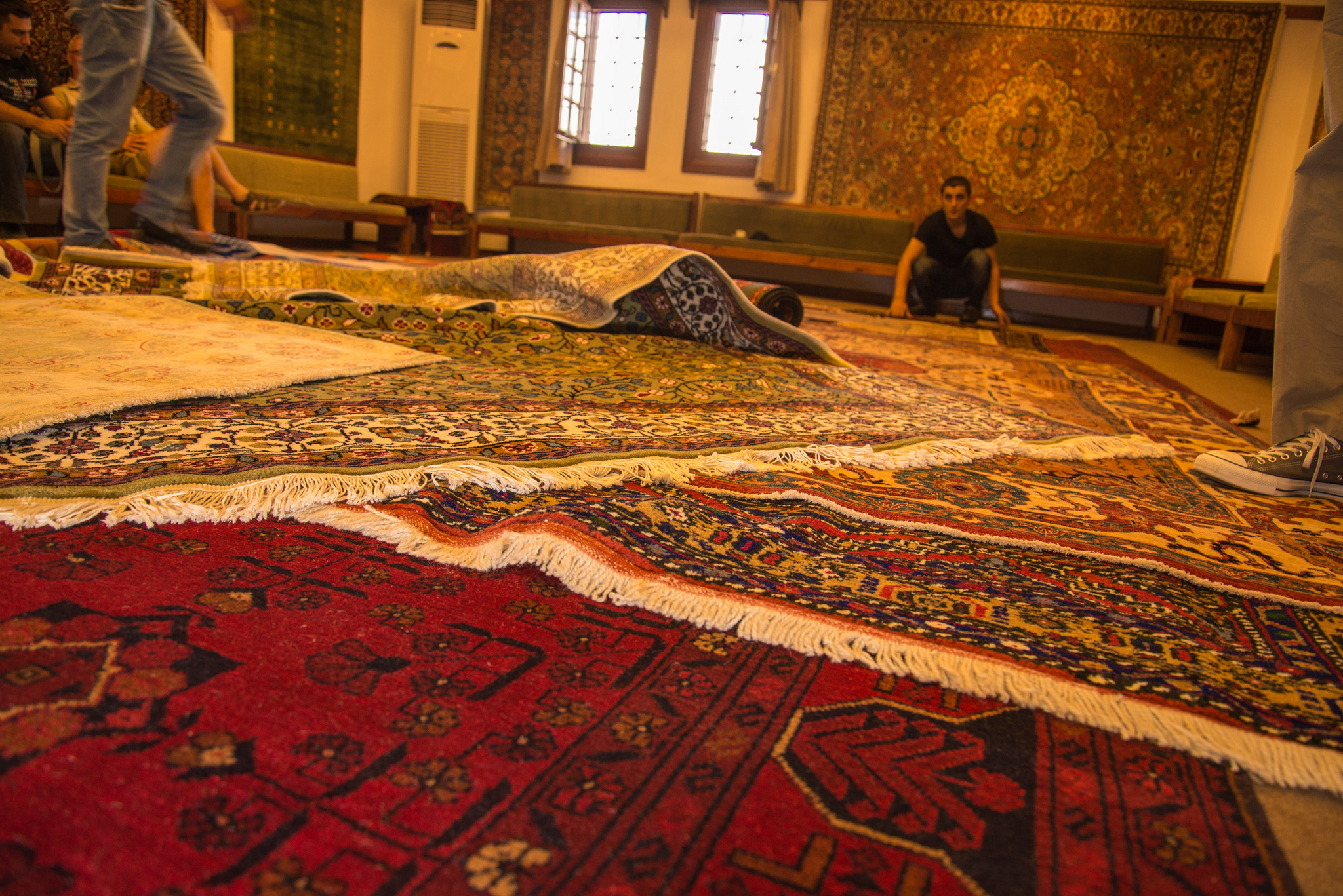
flickr photo by michael_swan – “Carpety” shared under a Creative Commons (BY-ND) license
Hand Knotted
If you are looking for something with a little more personal attention put into each and every piece of fiber, consider adding hand knotted area rugs to your living space. These are made completely without the use of additional tools or machinery, and the process by which they are created dates back centuries into the past. Hand knotted area rugs are made on a loom, with it’s fringe tied on vertically to form the warp. The design is formed by weaving horizontally through the warp threads, and slowly building the design from one side of the piece to the other. Knots are tied onto the warp threads by hand, cut by hand, and then pushed into place with a comb. This is a very lengthy process that can take several weeks to complete, even for the most experienced of weavers. Some weavers take their designs a step further by embossing three-dimensional patterns into the rug through cutting the finished pile with scissors.
There are several different types of knotting used in the world of hand knotted area rugs. The most common is the Persian knot, which produces thinner rugs and prevents gaps from forming in the piece. The Turkish knot is also very prevalent, particularly in thicker rugs where the double-knotted style is more obvious. Cheaper rugs may be produced using Jufti knots, but these are not nearly as secure as their other two counterparts. Hand knotted rugs are most often made out of silk or wool, but might also be made of cotton. The cheaper a rug is, the less likely it is to be made of silk.
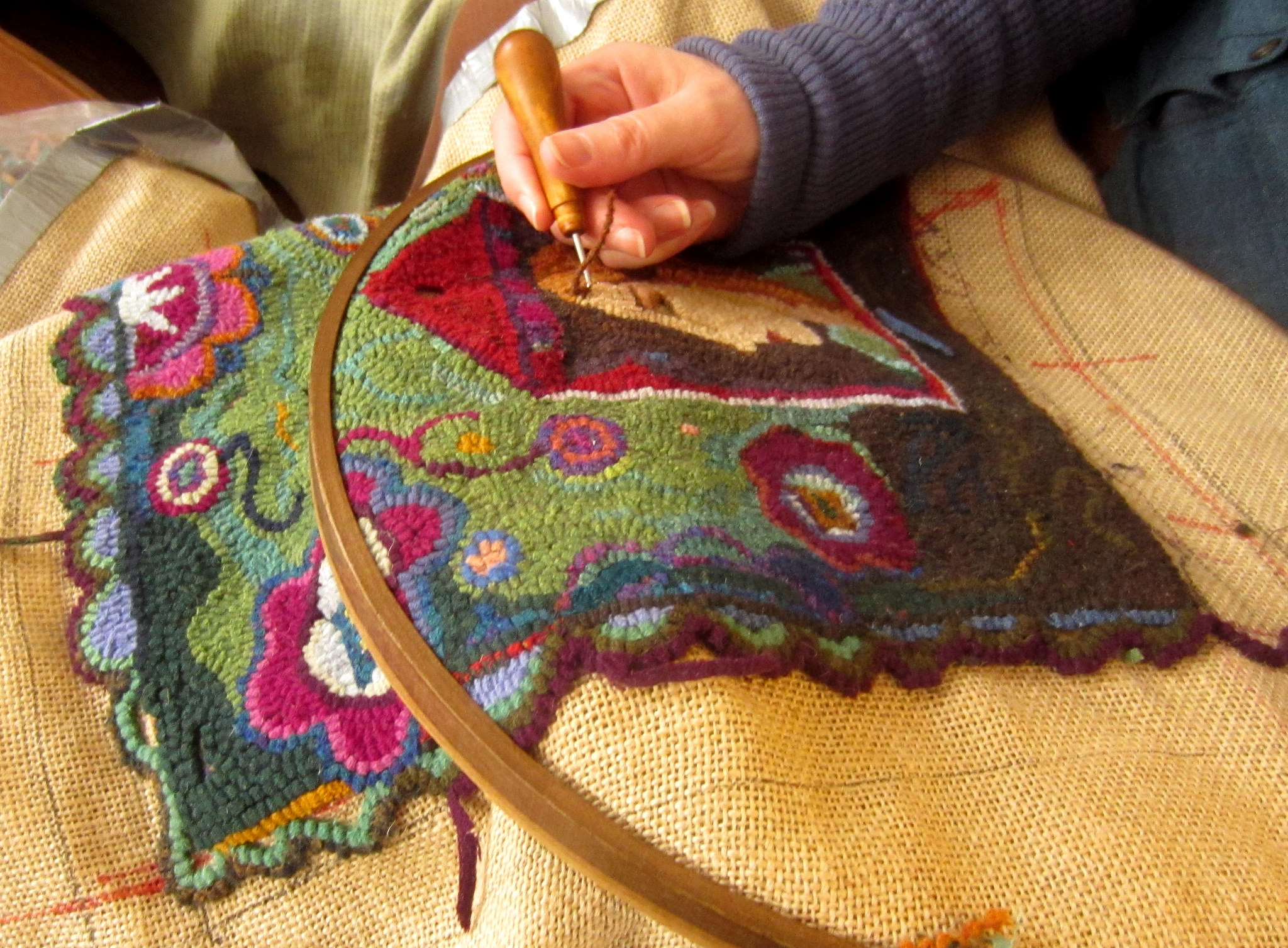
flickr photo by {studiobeerhorst}-bbmarie shared under a Creative Commons (BY) license
Hand Hooked
Hooking is a different process than loom weaving and knotting, and when it is done by hand, it produces truly unique and beautiful pieces of textile artwork that are sure to make any room look incredible. These are very delicate compared to other types of area rugs, however, and should be placed in rooms that do not have quite as much foot traffic. They are not made to withstand daily use, and should be considered a form of decoration above all else. They are made by stitching small knots of the chosen material into a latex backing through the use of a special hook tool. When finished, this looks as though the entire rug has been embroidered, rather than made with a pile. Because this process takes a very long time to complete, they are costly, and may be outside the budget of anyone looking for a cost-effective way to decorate their home.
Hand hooked area rugs come in a wide variety of styles and patterns to fit just about any space. Because of the method in which they are produced, they can be very colorful, with intricate patterns throughout. They are most commonly made of wool or polypropylene, but may also be made of polyester or even silk. Wool hand hooked rugs provide a little bit more durability than do those made of other materials.
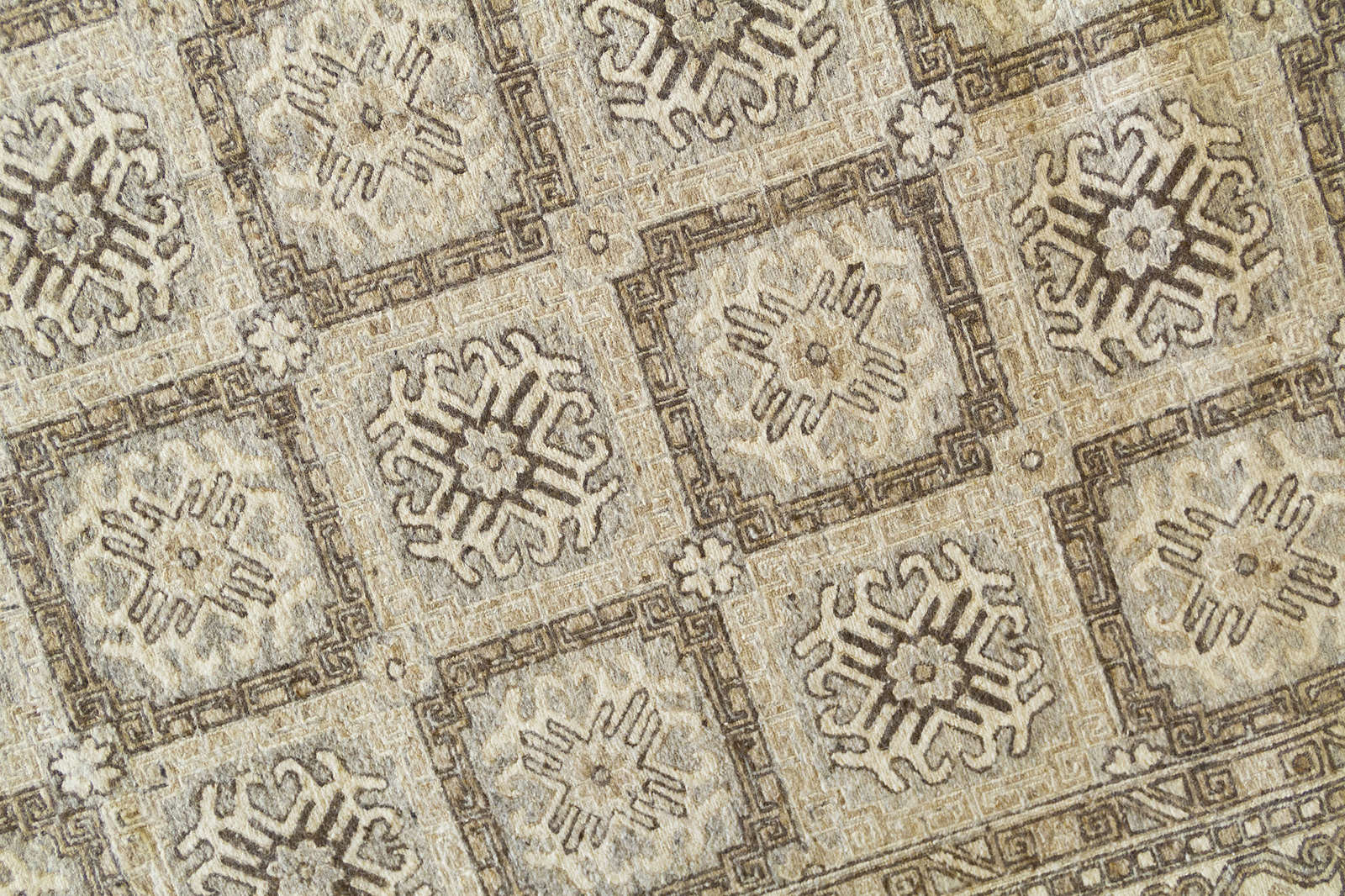
flickr photo by Didriks – shared under a Creative Commons (BY) license
Flat Woven
When you see a rug that does not have a pile and does not look as though as it has been stitched in any way, you are probably looking at a flat woven rug. These are some of the most common in the world of home décor, but they come in a wide variety of different styles that can make them stand out from all the rust. They can be made by hand or produced by a machine, and oftentimes, they can be reversed to help reduce wear and tear. Flat woven rugs are made by threading flat pieces of the material of your choice horizontally in between vertical warp threads on a loom. Since the threads are not knotted, they do not produce any “fluff,” but instead lay flat throughout the design. If you remember weaving paper mats in preschool, this is the same basic idea.
Flat woven rugs can be created in one of several different patterns, from the simple to the very elaborate. When woven by hand, these can be more expensive, but machine made flat woven rugs are much more affordable alternatives. They are often made from more unique materials, such as jute, bamboo, or hemp, but may also be made of polypropylene, cotton, or wool in some rare instances.
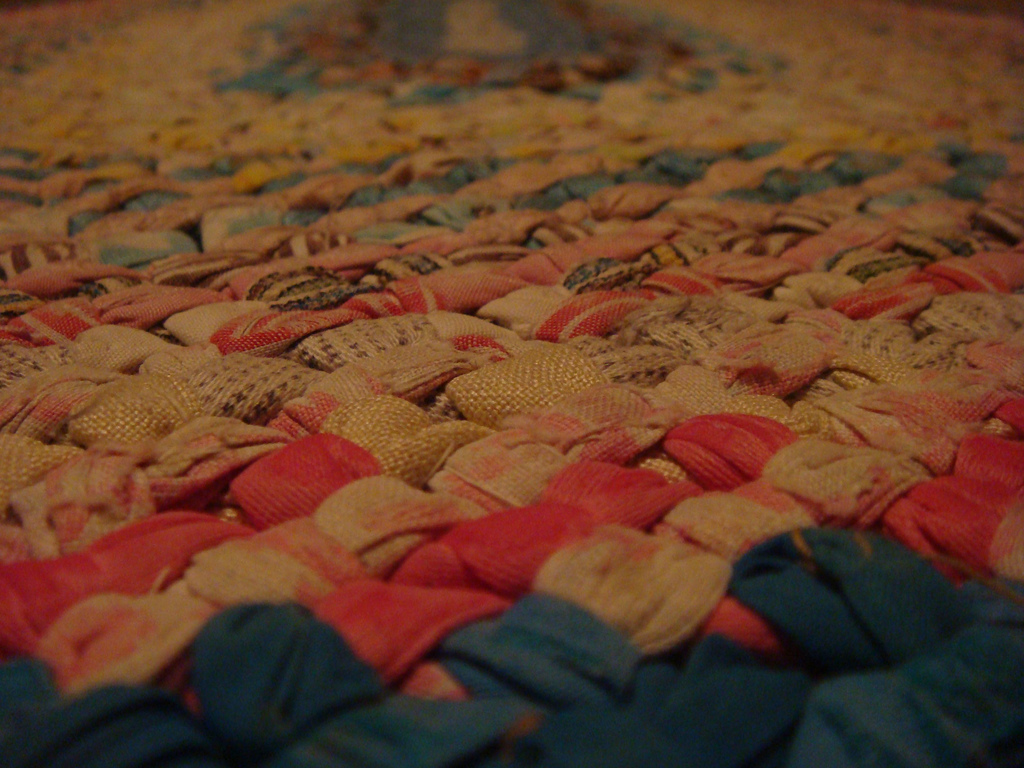
flickr photo by ..stiina.. shared under a Creative Commons (BY) license
Braided
Braided area rugs may be the ones that come to mind when you picture the type that sits in a country home in front of the living room fireplace. These rugs date back to the early days of American history, and they are designed to provide a lot of warmth without a lot of effort or cost. Long ago, they were made from pieces of rags and old clothes, or just about any other kind of cloth settlers could get their hands on. The process by which these are produced is very simple. Beginning with three to five strips of cloth tied together and held down by a clamp or other object, the rugs are braided in much the same way that hair might be. When the strips of cloth are used up, more are tied on in their place, and the long braided rope slowly takes shape. When it is long enough, the cloth braided rope is woven tightly into a round or oval rug, and is stitched firmly with sturdy thread and a durable needle. The braided rug creation process is completely handmade, with no additional tools or machinery.
Braided rugs are very durable and can withstand a lot of wear and tear. Depending on their material, they are often stain resistant as well, and make excellent additions to a kitchen or dining room space. They can be washed in the washing machine, and can even be flipped over to show the other side if the top becomes dirty beyond repair. They are usually made from cotton, but may also be made from polypropylene or synthetic blended material. These are not usually treated with any additional stain resistant coatings, but nevertheless remain one of the easiest types of rug to care for, especially for busy homes with lots of foot traffic.
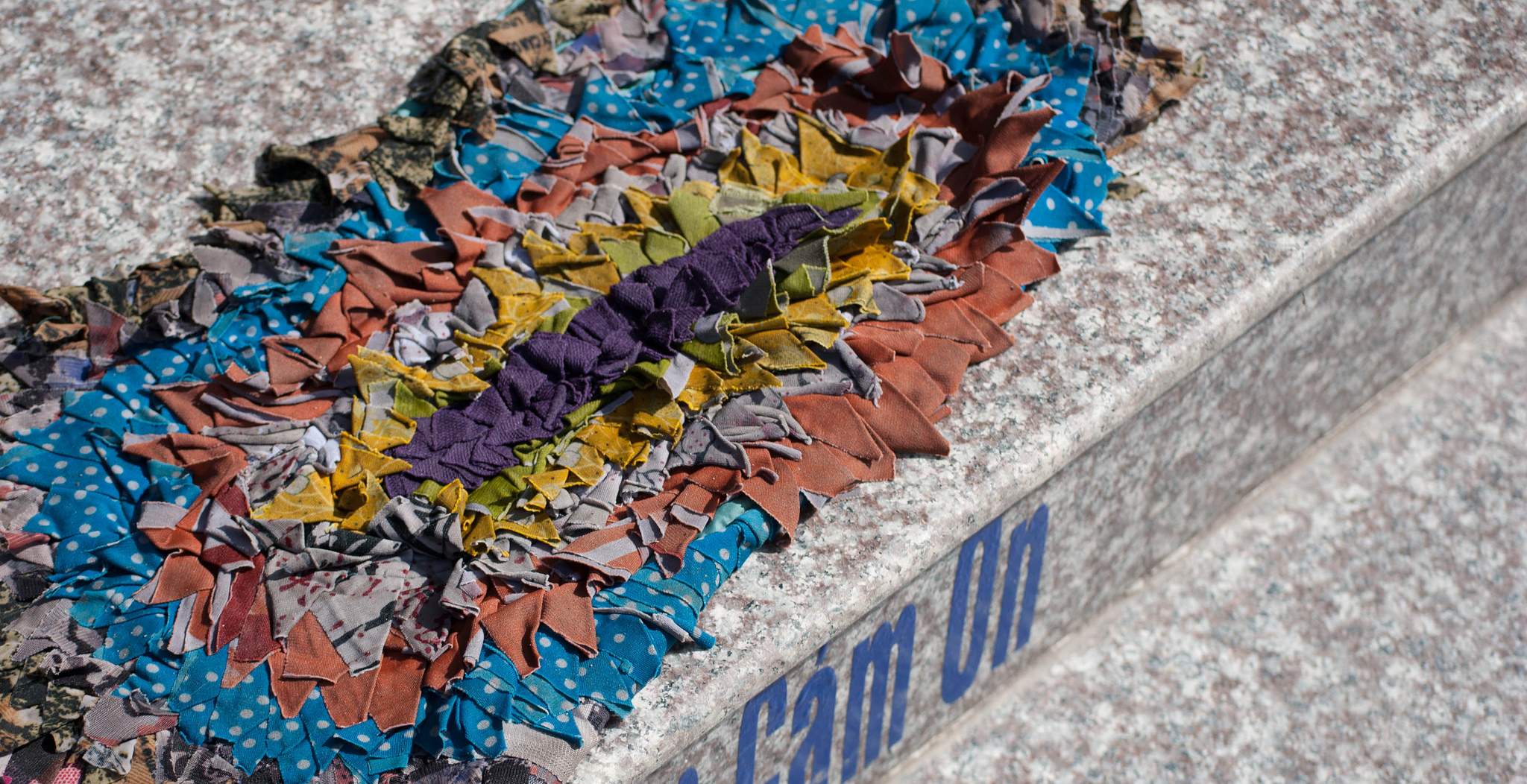
flickr photo by the michael davis-burchat shared under a Creative Commons (BY-ND) license
Hand Looped
Finally, for a casual rug style that looks great in just about any space, consider purchasing a hand looped rug. These are very similar to hand tufted and hand hooked rugs, in that they are created by starting with a backing onto which knots are tied by hand. However, because these are more casual, there are far fewer steps involved in working toward the finished product. As the knots are tied onto the backing, they are pushed into place and then left without trimming them down to fit a specific pile. Because of these, these may look a little bit more haphazard than their more prim and proper counterparts, which makes them the perfect addition to kids’ rooms, dorms, or any space that needs a touch of whimsy to bring it all together.
This style of rug making has recently become popular with individuals looking to learn how to make rugs at home. However, it is very cost efficient to purchase a premade hand looped rug, and since they come in such a wide variety of different materials, colors, sizes and shapes, it should be no trouble to find the perfect one for your living space. Hand looped rugs can be made from traditional materials, such as wool and cotton, but may also be made from leather or synthetic blended textiles to help them stand up to repeated use. Because these are looped by hand, they are very durable, and made great additions to hallways or even entryways, where they can add a pop of color to the first impression of your home.
No matter what type of budget you have or what your home décor may look like, you can easily find the perfect area rug to tie your space together. Choose from the wide variety of different rug styles available on the market today, and remember that handmade rugs are more likely to be at the high end of your budget than their more cost effective machine made counterparts. The material you are looking for in your rug may help you narrow down your decision, as well, since some rug styles do not work well when made from particular types of textiles. Once you learn everything you can about how area rugs are made, you will be much more capable of making the right decision for your home.